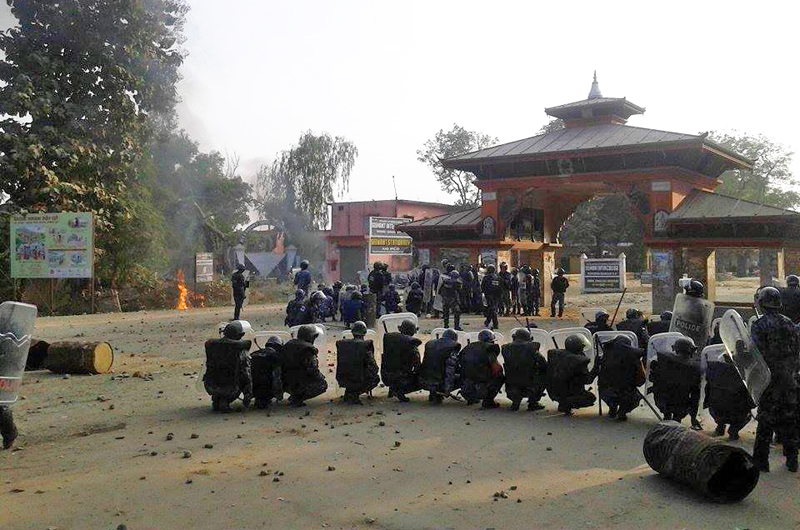Capital spending likely to take a big hit this fiscal year
Kathmandu, January 19
The government’s capital spending may take a big hit this fiscal year if the unrest in the Tarai and supply disruptions along Nepal-India border points continue for several weeks.
The government, in the first six months of the current fiscal year, was able to spend only 7.18 per cent of the total capital budget, show the data of the Financial Comptroller General Office.
In the first six months of last fiscal year, the government’s capital expenditure stood at 12.60 per cent of the allocated budget. In the same period a year earlier, capital spending hovered around 13.47 per cent of the allocation.
“The trend has not been satisfactory so far,” Finance Minister’s Advisor Govind Nepal told The Himalayan Times. “We are currently conducting mid-term review of the budget and will soon come up with necessary measures to ramp up spending.”
Capital expenditure includes government spending on civil works, and purchase of land, building, furniture, vehicles, plants and machinery, among others. In a country with huge infrastructure gap, low capital spending creates a binding constraint on economic growth, which stalls the process of raising living standard of people and sharing prosperity.
The government had allocated Rs 208.88 billion for capital spending this fiscal year — up 78.91 per cent than in the previous fiscal. The size of the capital budget had swollen this fiscal year as the government was intending to conduct post-earthquake reconstruction and rehabilitation works in full swing.
But in the six-month period between mid-July and mid-January, the government was able to spend only Rs 15 billion.
Capital spending in the country generally picks up after first four months of the fiscal year.
“But we have not seen any sign of spending going up so far because of shortage of petroleum products triggered by supply disruptions along Nepal-India border points,” said Devendra Karki, joint secretary of the Ministry of Physical Infrastructure and Transport, which gets the biggest chunk of capital budget.
The fuel shortage has prevented operation of heavy equipment, such as dozers, and other machinery at construction sites. “This has brought development works to a complete halt,” Karki said.
The country is facing this situation at a time when it should be spending billions of rupees to rebuild hundreds of thousands of houses and other physical infrastructure damaged or destroyed by earthquakes of April and May.
This has raised doubts over the ability of the National Authority for Reconstruction, a powerful body authorised to oversee post-quake reconstruction works, to meet its spending target of around Rs 50 billion for this fiscal. The government has allocated Rs 91 billion for reconstruction purpose in the current fiscal year.
“Yet, if the protests in the Tarai end soon and supply situation normalises within few weeks, capital spending can pick up because we have not stopped other works related to procurement,” said Karki. “If that happens, we may be able to utilise around 80 to 90 per cent of capital budget.”






